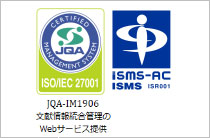ホームIMICライブラリMMWR抄訳2016年(Vol.65)19~35カ月齢児のワクチン接種率 ― アメリカ、・・・
2016/10/07Vol. 65 / No. 39
MMWR65(39):1065-1071
Vaccination Coverage Among Children Aged 19–35 Months — United States, 2015
19~35カ月齢児のワクチン接種率 ― アメリカ、2015年
アメリカでの小児の推奨されるワクチンの高接種率の持続は、多くのワクチン予防可能疾患を低レベルに保っている。2歳までの小児に推奨されているワクチン接種率を調査するために、CDCは19~35カ月齢児(2012年1月~2014年5月生まれ)を対象とした2015年のNational Immunization Survey(NIS)からのデータを分析した。NISは50州、コロンビア特別区、特定地域において無作為番号ダイアル方式による電話調査を使用して19~35カ月齢児のワクチン接種率を監視している。2015年では、国家的なワクチン接種率の推定値は、世帯インタビューおよび十分な扶養者データが得られた15,167人の小児のデータを基にした。また、ワクチン接種率に対する人種/民族、貧困状態、都市化の程度の影響を、ロジスティック回帰分析を使用して評価した。全体に、2014年から2015年の間の接種率に変化はなかったが、2015年では、3回以上のポリオウイルスワクチンの接種率(93.7%)、3回以上のB型肝炎ワクチンの接種率(92.6%)、1回以上の麻疹・おたふく風邪・風疹(MMR)ワクチン接種率(91.9%)、1回以上の水痘ワクチン接種率(91.8%)で高値を示した。ワクチン接種率は人種/民族、貧困状態、都市化の程度の因子による乖離がそれぞれ認められたが、最も影響があったのは貧困状態であった。連邦貧困水準より低い世帯の小児では貧困水準以上の世帯の小児と比べ、大半のワクチン接種率が低く、最も格差が大きいのはロタウイルスワクチン(66.8% vs 76.8%)、4回以上の肺炎球菌結合型ワクチン(PCV、78.9% vs 87.2%)、ヘモフィルス–インフルエンザ菌B型ワクチンのフルシリーズ(Hib、78.1% vs 85.5%)、4回以上のジフテリア、破傷風、無菌性百日咳ワクチン(DTaP、80.2% vs 87.1%)であった。さらに、地方に居住する小児では都市部と比べ、DTaP、ポリオワクチン、水痘ワクチン、PCV
A型肝炎ワクチン、ロタウイルスワクチンの接種率が低下した。ワクチン接種サービスへのアクセスの増強、およびワクチン接種の好機を逃さないための戦略をはじめとするエビデンスに基づいた介入の実施は、貧困レベル未満および地方に居住する小児のワクチン接種率を増加させる可能性がある。
References
- Whitney CG, Zhou F, Singleton J, Schuchat A. Benefits from immunization during the vaccines for children program era—United States, 1994–2013. MMWR Morb Mortal Wkly Rep 2014;63:352–5.
- Robinson CL; Advisory Committee on Immunization Practices (ACIP), ACIP Child/Adolescent Immunization Work Group. Advisory Committee on Immunization Practices Recommended Immunization Schedules for Persons Aged 0 Through 18 Years—United States, 2016. MMWR Morb Mortal Wkly Rep 2016;65:86–7. <http://dx.doi.org/10.15585/mmwr.mm6504a4>
- Community Preventive Services Task Force. The Guide to Community Preventive Services: increasing appropriate vaccination. Atlanta, GA: US Department of Health and Human Services, Community Preventive Services Task Force; 2016. <http://www.thecommunityguide.org/vaccines/index.html>
- Smith PJ, Stevenson J, Chu SY. Associations between childhood vaccination coverage, insurance type, and breaks in health insurance coverage. Pediatrics 2006;117:1972–8. <http://dx.doi.org/10.1542/peds.2005-2414>
- Bednarczyk RA, Orenstein WA, Omer SB. Estimating the number of measles-susceptible children and adolescents in the United States using data from the National Immunization Survey-Teen (NIS-Teen). Am J Epidemiol 2016;184:148–56. <http://dx.doi.org/10.1093/aje/kwv320>
- CDC. Notifiable diseases and mortality tables. MMWR Morb Mortal Wkly Rep 2016;65:ND-38.
- Pollard SL, Malpica-Llanos T, Friberg IK, Fischer-Walker C, Ashraf S, Walker N. Estimating the herd immunity effect of rotavirus vaccine. Vaccine 2015;33:3795–800. <http://dx.doi.org/10.1016/j.vaccine.2015.06.064>
- Hill HA, Elam-Evans LD, Yankey D, Singleton JA, Kolasa M. National, state, and selected local area vaccination coverage among children aged 19–35 months—United States, 2014. MMWR Morb Mortal Wkly Rep 2015;64:889–96. <http://dx.doi.org/10.15585/mmwr.mm6433a1>
- Wolter K, Pineau V, Skalland B, et al. Total survey error assessment for socio-demographic subgroups in the 2012 U.S. National Immunization Survey. In: Biemer P, De Leeuw E, Edwards B, Kreuter F, Lyberg L, Tucker C, and West B, eds. Total survey error in practice. Hoboken, NJ: John Wiley & Sons, Inc. In press 2016.
- Yankey D, Hill HA, Elam-Evans LD, et al. Estimating change in telephone survey bias in an era of declining response rates and transition to wireless telephones—evidence from the National Immunization Survey (NIS), 1995–2013. Presented at the 2015 American Association for Public Opinion Research (AAPOR) 70th Annual Conference, Hollywood, FL; May 14–17, 2015.
Copyright © 2013 International Medical Information Center. All Rights Reserved.












